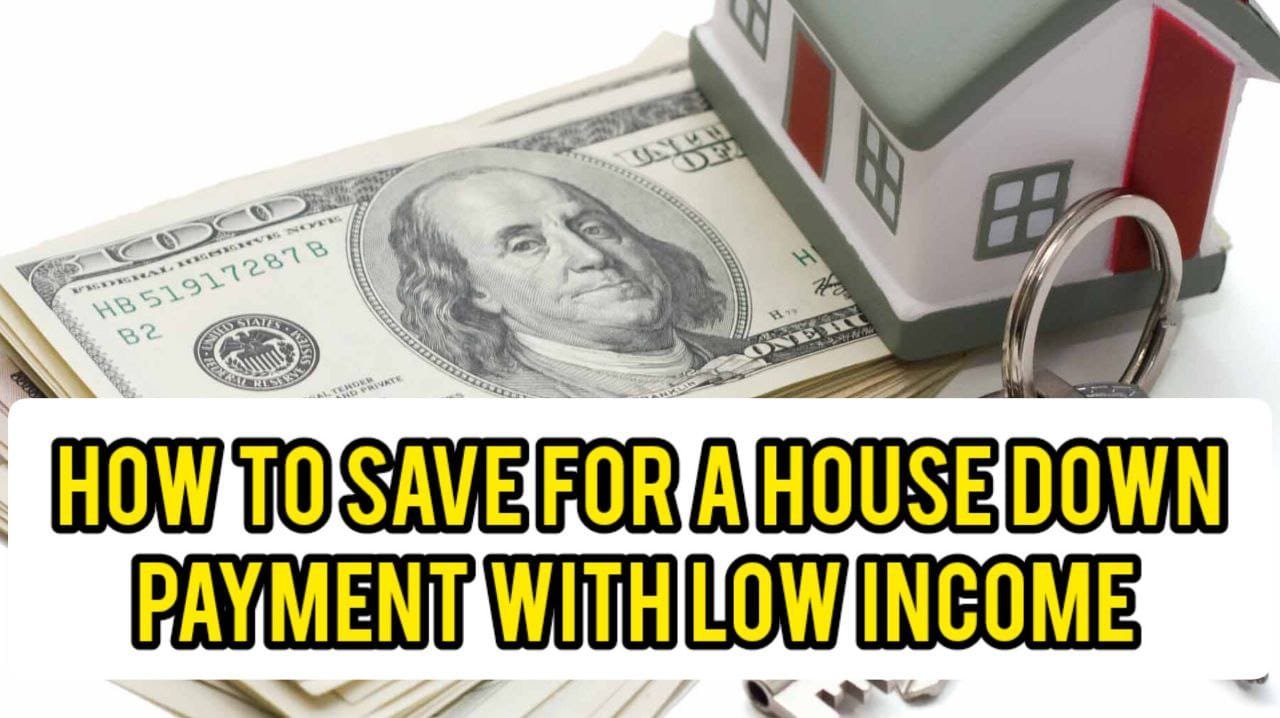Buying a house is one of the most significant financial milestones many people dream of, but the down payment can feel like a mountain to climb—especially if you’re working with a low income. Don’t worry, though; buying a home is not impossible! With a clear plan, realistic goals, and some good habits, saving for a down payment on a house is achievable, even on a limited budget. In this article, we’ll break down everything you need to know about saving for a house down payment when money is tight. Let’s dive into strategies that will get you closer to your dream home.
What is a Down Payment?
A down payment is the upfront money you pay when purchasing a home. Most lenders require a certain percentage of the home’s price as a down payment to reduce their lending risk. Typically, down payments range from 3% to 20% of the property’s value, with 20% being the ideal target to avoid additional fees like Private Mortgage Insurance (PMI).
Why is Saving for a Down Payment Important?
Having a solid down payment can lower your mortgage payments, reduce interest rates, and help you avoid extra costs like PMI. Plus, it shows lenders that you’re financially responsible, making them more likely to approve your loan. A down payment also gives you immediate equity in your home.
Understanding Low-Income Homebuyers’ Challenges
If you’re on a low income, you may feel limited in your savings potential. Expenses may seem high in comparison to your income, making it feel like there’s little room to save. But with smart choices and focused budgeting, anyone can save for a down payment. Let’s look at some effective ways to get started!
15 Ways To Save For A House Down Payment With Low Income
1. Set a Realistic Savings Goal
Determine Your Ideal Down Payment
Figure out how much you realistically need to save. Research home prices in your target area and calculate 10-20% of that amount as your target. If a 20% down payment seems out of reach, remember that some programs accept as little as 3% for first-time homebuyers.
Consider Different Mortgage Options
Look into FHA loans, VA loans, and USDA loans, which may allow lower down payments. FHA loans, for example, require as little as 3.5% down, which can be a game-changer for low-income buyers.
2. Create a Dedicated Savings Account
Setting up a separate savings account solely for your down payment keeps your savings out of sight, out of mind. Look for high-yield savings accounts or money market accounts that offer better interest rates, so your money grows faster.
3. Make a Budget and Stick to It
Track Your Monthly Expenses
Understanding where your money goes each month is the first step to finding extra savings. Use apps like Mint, YNAB (You Need a Budget), or even a simple spreadsheet to categorize expenses and see where you can cut back.
Identify Areas to Reduce Spending
Do you dine out often? Have subscriptions you rarely use? Small changes in discretionary spending can add up. Cooking at home, canceling unused memberships, or switching to a cheaper phone plan are just a few ways to reduce expenses.
4. Automate Your Savings
Set up automatic transfers from your checking account to your down payment savings account each payday. Automating savings makes it easier because you’re less tempted to skip a deposit or spend the money elsewhere.
5. Find Additional Income Streams
Take on a Side Gig
From freelancing and dog-walking to selling crafts online, side hustles are a popular way to earn extra money. Look for a part-time job or flexible gig that doesn’t interfere with your main income source.
Sell Unwanted Items
Declutter your home and sell items you no longer need. Sites like eBay, Facebook Marketplace, and Craigslist can help turn old electronics, furniture, and clothes into extra cash.
6. Take Advantage of Down Payment Assistance Programs
Numerous programs offer grants or low-interest loans specifically for down payments. Check with your state or local housing authority, as many areas provide down payment assistance for low-income homebuyers.
7. Save Your Windfalls
Whenever you receive extra money—like a tax refund, holiday bonus, or cash gifts—direct it to your down payment fund. These lump sums can make a huge difference in your savings without affecting your regular income.
8. Cut Down on High-Interest Debt
High-interest debts, such as credit card debt, can drain your finances quickly. By focusing on paying down these balances, you’ll free up more money for savings and improve your credit score, which can lead to better mortgage rates.
9. Use the 50/30/20 Budget Rule
What is the 50/30/20 Rule?
This budgeting strategy allocates 50% of your income to needs, 30% to wants, and 20% to savings and debt repayment. This rule can help you prioritize saving for your down payment while still covering essentials and enjoying small luxuries.
Adapt the Rule for Low-Income Savings
If your income is stretched thin, consider adjusting the percentages to fit your situation. Perhaps a 60/20/20 rule might work better until you build momentum.
10. Embrace Frugal Living
Saving for a down payment often means making some lifestyle sacrifices. Find joy in simpler pleasures, cook at home, buy secondhand, and look for free or low-cost entertainment options to help build your savings faster.
11. Save Your Raises and Bonuses
When you receive a raise, act as though you didn’t! Direct the extra income toward your down payment fund, and you’ll see your savings grow without changing your daily lifestyle.
12. Set a Timeline and Track Your Progress
Create a Timeline for Your Savings Goal
Set a realistic timeline for when you want to have your down payment saved. Break it down into monthly or quarterly goals, which will make the process feel more achievable.
Use a Visual Tracker
Consider using a visual savings tracker, like a chart or app, to monitor your progress. Seeing your savings grow can be motivating and help you stay on track.
13. Cut Back on Utilities and Energy Costs
Small adjustments can lead to big savings over time. Lower your thermostat, turn off lights, unplug appliances, and reduce water usage. These small efforts can help lower your monthly bills, leaving more room for savings.
14. Consider a Savings Challenge
Savings challenges, like the 52-Week Challenge, can make saving feel like a fun game. Start small by saving a dollar the first week, then increase by a dollar each week. By the end of a year, you’ll have saved $1,378 without feeling too much strain on your budget.
15. Stay Motivated and Positive
Saving for a down payment is a long-term goal, and staying motivated can be challenging. Visualize your dream home, celebrate small wins along the way, and remind yourself why you’re making these sacrifices. Every dollar saved brings you closer to homeownership.
Conclusion
Saving for a house down payment on a low income might seem daunting, but it’s entirely possible with the right mindset and strategies. By setting clear goals, making a budget, cutting unnecessary expenses, and finding extra income sources, you can build your down payment fund. The journey to homeownership may be slow, but each step forward is progress. Keep pushing, and remember that every little bit counts toward making your dream home a reality.
FAQs
How long does it take to save for a house down payment with a low income?
The time it takes varies based on your savings rate, home price, and down payment goal. With steady savings, it can take several years, but staying consistent will get you there!
Are there specific loans that help low-income buyers with down payments?
Yes, FHA, USDA, and VA loans offer low down payment options for eligible buyers. Many states also provide down payment assistance programs for low-income homebuyers.
How much should I save each month for a down payment?
It depends on your income and expenses. Aim to save 10-20% of your income each month for your down payment fund, adjusting as necessary to meet your goal.
Is it okay to start with a small down payment?
Yes! Many programs allow down payments as low as 3%. A smaller down payment may mean higher monthly payments, but it can help you get into a home sooner.
Can I still save for a down payment if I have debt?
Yes, but prioritize high-interest debt first. Balancing debt payments and savings can be challenging but manageable with a solid budget and discipline.

Don has over 5 years of experience as an SEO expert, writer, and digital media professional. He has led teams to create engaging news broadcasts and has covered major news stories. Hems has worked with top outlets like Bloomberg, Yahoo! Finance, and Fox Business Network, focusing on insurance, business, and finance. His skills combine SEO knowledge with strong storytelling, making him an expert in creating content that is original, optimized and informative.

